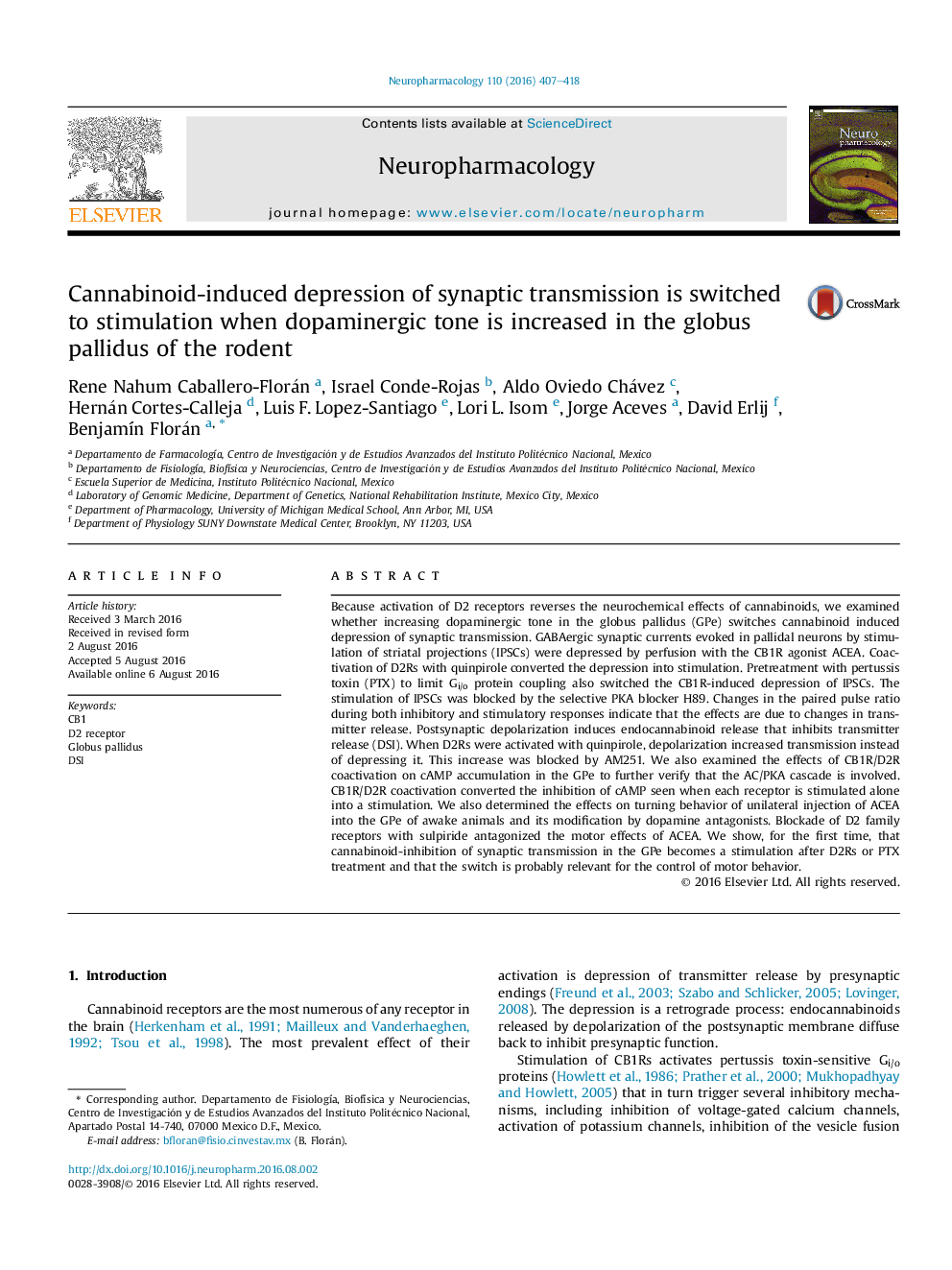| کد مقاله | کد نشریه | سال انتشار | مقاله انگلیسی | نسخه تمام متن |
|---|---|---|---|---|
| 5549240 | 1402859 | 2016 | 12 صفحه PDF | دانلود رایگان |
- Endocannabinoids and exocanabinoids depress inhibitory synaptic transmission in the GPe.
- Coactivation of CB1Rs and D2Rs reverse cannabinoid-induced depression.
- The stimulation is mediated by activation of the cAMP/PKA cascade.
- D2R block prevents ipsilateral turning induced by intrapallidal injections of cannabinoid.
Because activation of D2 receptors reverses the neurochemical effects of cannabinoids, we examined whether increasing dopaminergic tone in the globus pallidus (GPe) switches cannabinoid induced depression of synaptic transmission. GABAergic synaptic currents evoked in pallidal neurons by stimulation of striatal projections (IPSCs) were depressed by perfusion with the CB1R agonist ACEA. Coactivation of D2Rs with quinpirole converted the depression into stimulation. Pretreatment with pertussis toxin (PTX) to limit Gi/o protein coupling also switched the CB1R-induced depression of IPSCs. The stimulation of IPSCs was blocked by the selective PKA blocker H89. Changes in the paired pulse ratio during both inhibitory and stimulatory responses indicate that the effects are due to changes in transmitter release. Postsynaptic depolarization induces endocannabinoid release that inhibits transmitter release (DSI). When D2Rs were activated with quinpirole, depolarization increased transmission instead of depressing it. This increase was blocked by AM251. We also examined the effects of CB1R/D2R coactivation on cAMP accumulation in the GPe to further verify that the AC/PKA cascade is involved. CB1R/D2R coactivation converted the inhibition of cAMP seen when each receptor is stimulated alone into a stimulation. We also determined the effects on turning behavior of unilateral injection of ACEA into the GPe of awake animals and its modification by dopamine antagonists. Blockade of D2 family receptors with sulpiride antagonized the motor effects of ACEA. We show, for the first time, that cannabinoid-inhibition of synaptic transmission in the GPe becomes a stimulation after D2Rs or PTX treatment and that the switch is probably relevant for the control of motor behavior.
254
Journal: Neuropharmacology - Volume 110, Part A, November 2016, Pages 407-418
